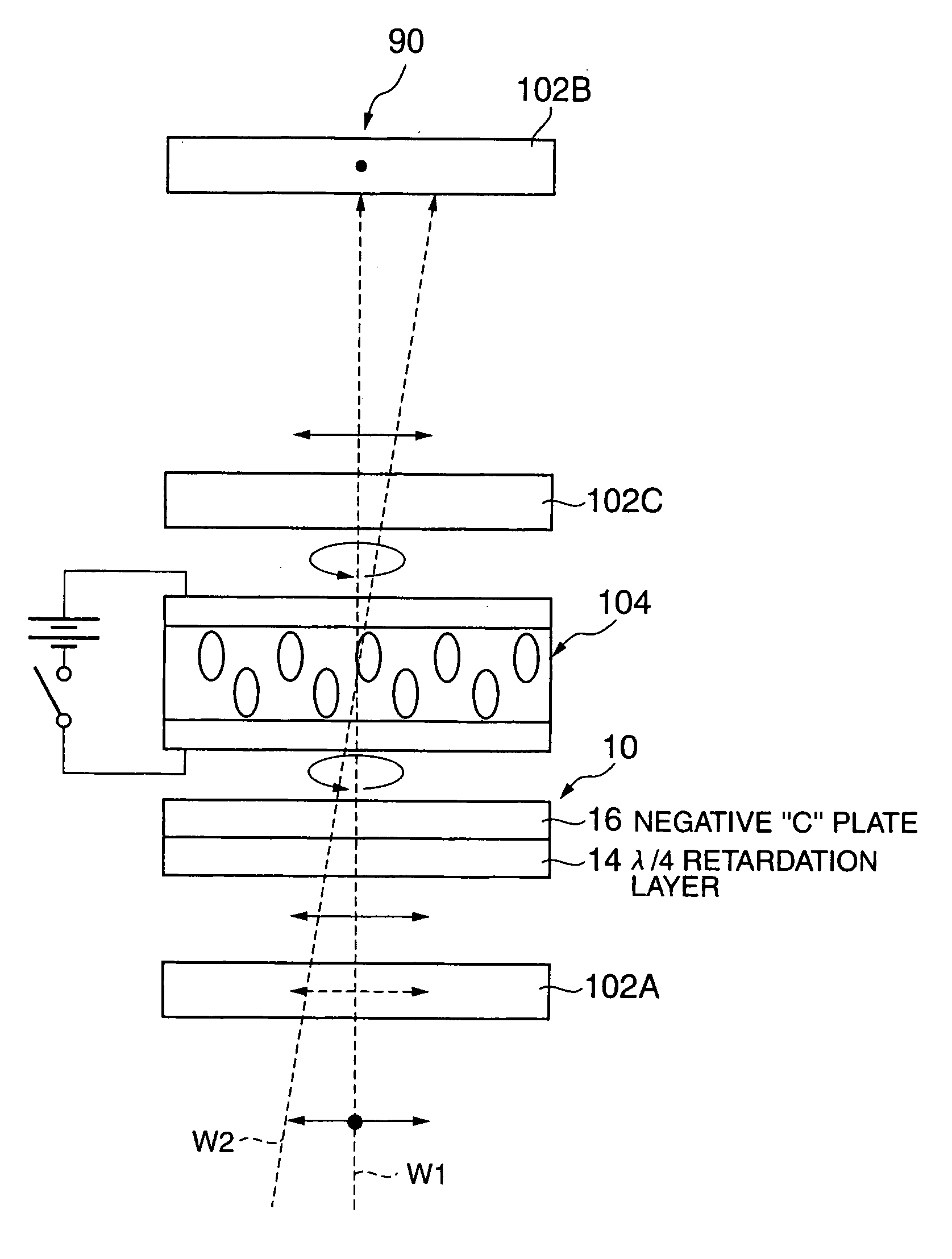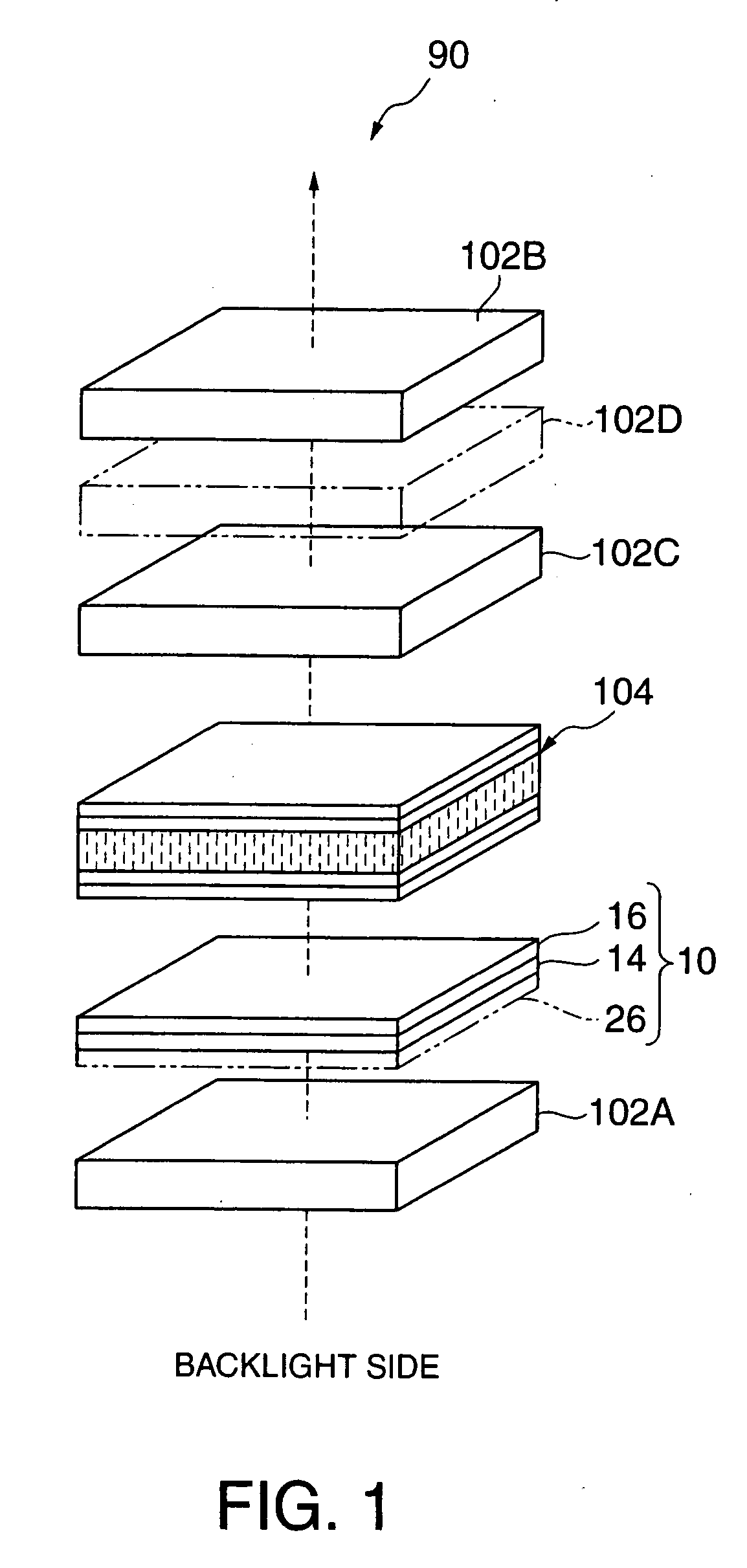Laminated retardation optical element, process of producing the same, and liquid crystal display
a retardation optical element and retardation technology, applied in non-linear optics, instruments, optics, etc., can solve the problems of image quality and apt to be inferior, and achieve the effects of reducing contrast, reducing viewing angle dependency, and reducing contras
- Summary
- Abstract
- Description
- Claims
- Application Information
AI Technical Summary
Benefits of technology
Problems solved by technology
Method used
Image
Examples
example
[0203] A toluene solution (nematic liquid crystal solution) was prepared by dissolving a monomer containing, in its molecule, polymerizable acrylates at both ends and spacers between mesogen existing at the center and the acrylates, having a nematic-isotropic transition temperature of 110° C. (a monomer having a molecular structure represented by the above chemical formula (11)). To this nematic liquid crystal solution, a photopolymerization initiator (“Irgacure® 907” available from Ciba Specialty Chemicals K.K., Japan) was added in an amount of 5% by weight of the above-described monomer.
[0204] On the other hand, a transparent glass substrate was spin-coated with polyimide (“Optomer® AL1254” manufactured by JSR Corporation, Japan) dissolved in a solvent. After drying, a film of the polyimide (film thickness: 0.1 μm) was formed at 200° C., and was rubbed in one direction so that it could function as an alignment layer.
[0205] The glass substrate coated with the alignment layer was ...
PUM
| Property | Measurement | Unit |
|---|---|---|
| thickness | aaaaa | aaaaa |
| angle | aaaaa | aaaaa |
| angle | aaaaa | aaaaa |
Abstract
Description
Claims
Application Information
 Login to View More
Login to View More - R&D
- Intellectual Property
- Life Sciences
- Materials
- Tech Scout
- Unparalleled Data Quality
- Higher Quality Content
- 60% Fewer Hallucinations
Browse by: Latest US Patents, China's latest patents, Technical Efficacy Thesaurus, Application Domain, Technology Topic, Popular Technical Reports.
© 2025 PatSnap. All rights reserved.Legal|Privacy policy|Modern Slavery Act Transparency Statement|Sitemap|About US| Contact US: help@patsnap.com



